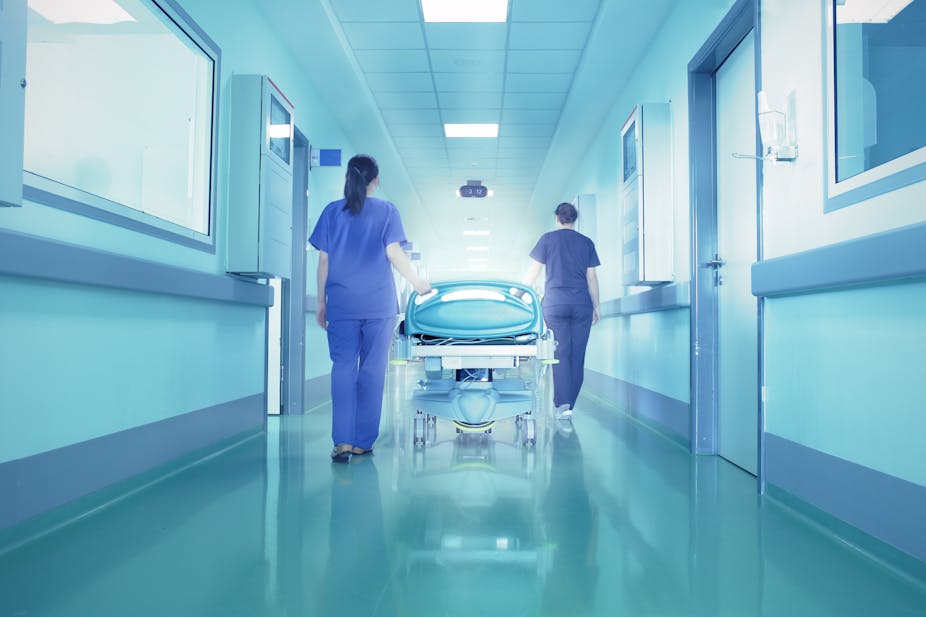In Austerity Britain, few cutbacks capture the public ire like those directed towards the beloved NHS. In the public consciousness at least, it seems the NHS must remain outside the whims of party politics. As such, few policies are as divisive as the rationing of healthcare. Often perceived solely as an economic measure, many objective observers would argue it has no place in the health professional’s toolkit.
Yet where healthcare is concerned, there clearly have to be changes in service delivery. That patients are living longer and with increasingly complex conditions demonstrates the abilities of our health service, but it also places an ever-increasing burden on it. As such, economic restrictions are often essential.
Rationing
Explicit rationing already occurs in many instances and is often welcomed by service users. For example it is well known and generally accepted that cosmetic procedures and specific drug treatments are tightly controlled for financial reasons. The area of palliative care restricts treatment to patients with life-limiting illnesses. This is entrenched in NHS policy through the guidelines for treating terminally ill patients at the end of their lives.
Where rationing is publicly acknowledged and explained in this way, it allows patients to influence funding decisions. It also helps to legitimise difficult choices and takes some of the burden of these rationing decisions away from healthcare professionals.
When rationing is done implicitly it is more controversial, since it becomes harder to see which treatment options are being funded. It also means that patients have no ability to influence the decision.
It emerged recently, for example, that the NHS in England and Wales was not using best evidence to decide whether to fund cataract surgery, but deciding purely on financial grounds. Yet it cannot be denied that implicit rationing has its advantages: it ensures that decisions are made on a patient-by-patient basis by a qualified professional, and perhaps most importantly, for purely objective reasons.
Self-management
One variety of this kind of rationing may not be intuitively obvious. It refers to a policy that has risen high on the healthcare agenda in recent years: giving patients more control over their care. In the bad old days, many healthcare professionals kept information to themselves. Well informed patients with opinions about how they should be treated would sometimes end up in conflict with their doctors, and were often seen as little more than an aggressive manifestation of the worried well.
While this can still sometimes pose a risk to professional-patient relationships, most professionals now accept and encourage patients to gain as much relevant information as possible. This allows patients to influence their treatment and know about their condition, how to manage it and when to use health services. It gives them control over their health goals rather than having them defined by a professional who may neither know them nor know what it is like to live with their condition.
There is strong evidence that patients whose treatments include elements of self-management experience greater satisfaction, have more confidence and are better at coping with the impact of their conditions – in the short-term at least. There is also evidence that they may use up fewer resources, through reduced hospital admissions, fewer visits to GPs and fewer days off work.

Admittedly the evidence about these savings largely emerges from research into one or two specific conditions such as asthma and diabetes. It is also possible that the economic benefits of self-management may be partly offset with the cost of developing the services. For example, there is evidence that self-monitoring of oral blood-thinning drugs is as effective or sometimes better than the alternatives, but wide adoption could cost the NHS an additional £8m-£14m per year.
What’s really afoot?
Yet there is little doubt that a well informed patient is a far cheaper commodity than even the lowliest healthcare professional. By creating an army of psuedo-specialists, NHS policy developers have doubtless achieved massive cost savings. But have they created value for patients? Have the economic savings been passed on to other areas of healthcare or merely included in spending reductions? In other words, has the government encouraged self-management because it is the right solution for an increasingly informed population, or as a means of surreptitiously adjusting the purse strings?
As the New-York-based academic Steven Baumann has written, “political entities and corporations often use language and concepts that sound like they are all about promoting human dignity, autonomy and freedom” but in reality are a thinly guised veil covering cuts in basic services and needs.

It is hard to be confident that this is not the case here. It doesn’t change the fact that when this form of rationing is used in the patients’ interest and embedded into the very fabric of an organisation, it can be a force for good. But it means we need to make sure that the best of the benefits apply each time a decision is taken to introduce a new policy that gives more control to patients.
As two people with a vested interest in healthcare, we are reminded of the Declaration of Geneva: “The health of my patient must be my first concern.” To reduce this noble sentiment to a mere sound-bite by prioritising the vulgar notion of price places political opportunism at direct odds with patient welfare. This would hardly surprise given the escapades of some our elected representatives, so we clearly need to be vigilant. One suspects that a certain Mr Bevan would be more than a little disappointed by this reality.
This article was co-written by Andy Cassidy, an ICT developer at St Vincent’s Hospice in Renfrewshire, who was diagnosed with Crohn’s disease in 2005.

